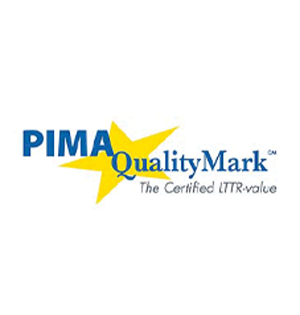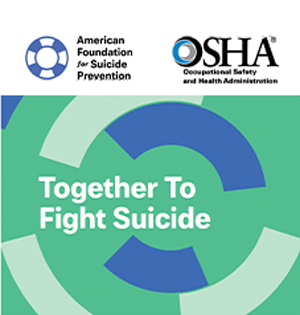New York City program seeks to place low-income workers in construction jobs
A New York City program will help place 2,300 low-income workers in new construction jobs, according to constructiondive.com.
New York City Pathways to Industrial and Construction Careers will help job seekers with all phases of employment, including recruitment and training, job placement, retention and advancement. The program specifically targets participants who have an interest in construction and industrial careers and aims to place workers in high-wage and/or union jobs such as tradesperson, construction project manager or general utility worker.
Funded by an $18.6 million grant, the program comes from the U.S. Economic Development Administration in response to a winning proposal to the Good Jobs Challenge under the American Rescue Plan Act of 2021.
In 2020, New York state had the fourth-largest construction sector in the U.S. but also the highest number of job losses, many of which resulted from the COVID-19 pandemic. Still, most firms employed fewer than 20 people, and more than 25% of workers earned more than $80,000 annually.
PIMA’s expanded QualityMarkCM certification program hits one-year mark

|
The Polyisocyanurate Insulation Manufacturers Association has expanded its voluntary QualityMark certification program for Canadian and U.S. manufacturers of polyisocyanurate insulation.
The program enables participants to obtain third-party certification of long-term thermal resistance values for insulation products independently selected from manufacturing locations. The expanded program now includes third-party verification of thermal resistance values (R-values) for full thickness products independently selected from distribution locations. Results from the expanded program criteria will be published starting in 2023.
“PIMA began implementing QualityMark’s new program requirements during the second quarter of 2021,” says PIMA President Justin Koscher. “While the COVID-19 pandemic presented early challenges that included travel restrictions for independent agencies involved in product selection, we are encouraged by the program’s success as we hit the one-year mark of the implementation phase. The past year has enabled PIMA to verify the expanded program will provide end users with valuable information on performance by selecting and testing products on a more frequent basis.”
The QualityMark program launched in 2004 to enable polyisocyanurate manufacturers to obtain third-party certified LTTR values for permeable faced polyisocyanurate insulation products manufactured in Canada and the U.S.
Tips for recovering from work stress

|
Work-related stress is a persistent problem. Only 32% of employees throughout the world say they are thriving, and 43% report high levels of daily stress, according to Harvard Business Review. Some reports suggest up to 61% of U.S. workers feel they are burning out at any moment in time, and those who are stressed out at work are more than three times as likely to look for a new job.
Employers increasingly are offering benefits such as virtual mental health support, spontaneous days off, meeting-free days and flexible work schedules. However, it is important you know what works to help you recover from stress, which involves restoring symptoms of work stress (such as anxiety) back to pre-stressor levels.
Harvard Business Review offers the following tips.
- Detach psychologically from work. Research shows even thinking about work detracts from your ability to recover from it, and the simple presence of your mobile phone distracts you. Dedicate a fixed time each day when you can fully devote attention to a nonwork-related activity. Learn which triggers, such as your phone, prevent you from psychologically detaching from work.
- Take micro-breaks during the workday. Ten-minute breaks taken during the workday can be surprisingly effective for recovering from daily work stress. You could use the time to meditate, eat a snack or have a nonwork-related conversation with a co-worker. Micro-breaks taken earlier in the workday reportedly contribute to greater recovery.
- Consider your preference for recovery activity. Some people may feel pressured into going to a group exercise class or participating in a company activity during the weekend when they want to be home with their families. Not having a choice in your own recovery can sometimes do more harm than good. If you feel pressured to relax in a certain way, talk to your boss about how you can gain more autonomy to do recovery activities you prefer.
- Prioritize high-effort recovery activities. Research shows exercise can be even more effective for recovery. If you do not enjoy going to the gym or playing team sports, you can try a fast walk, a hike or a swim. Other activities that can work well for recovery are “mastery experiences” that require high levels of dedication, such as learning a new language or how to play an instrument.
- Shape your environment for optimal recovery. Being exposed to nature at work contributes positively to well-being and lowers the risk of burnout. Some companies are building exposure to natural elements into the workplace, such as park walks during lunch breaks. Exposure to daylight, having a window view or indoor greenery at the workplace have been shown to have a favorable effect on sleep quality, perceived stress and overall health. Even indirect exposure to nature—such as looking at nature scenes on a screen—can have recovery benefits.
OSHA, foundation form alliance for suicide

|
The Occupational Safety and Health Administration and American Foundation for Suicide Prevention signed an alliance agreement Sept. 7 to promote workplace mental health and suicide prevention awareness. AFSP is a voluntary health organization giving those affected by suicide a nationwide community empowered by research, education and advocacy.
During the two-year agreement, OSHA and AFSP will develop information and products regarding workplace mental health and suicide prevention awareness in multiple languages that reflect diversity in the workforce and encourage workers’ sense of belonging. Participants will share best practices and effective approaches for promoting workplace suicide prevention awareness.
“Suicide is a leading cause of death among working age adults in the U.S. It deeply impacts workers, families and communities,” says Assistant Secretary of Labor for Occupational Safety and Health Doug Parker. “OSHA is proud to join with the American Foundation for Suicide Prevention to eliminate barriers to getting help and promote the mental well-being of all workers.”
Alliance objectives also include exploring opportunities for AFSP to contribute to a new chapter about Traumatic Stress for OSHA’s Safety and Health Management System directive; updating and expanding on OSHA’s Preventing Suicides webpage; and sharing information about suicide prevention, mental health and opioids during Suicide Prevention Awareness Month and Construction Suicide Prevention Week.
Labor shortage threatens recent infrastructure efforts
A workforce survey conducted by the Associated General Contractors of America and Autodesk Construction shows labor shortages are affecting nearly all construction firms and could threaten the success of new federal investments in infrastructure and manufacturing, according to agc.org.
AGC and Autodesk Construction conducted the survey in late July and early August. Nearly 1,300 firms completed the survey from a broad cross-section of the construction industry.
“Construction workforce shortages are severe and having a significant impact on construction firms of all types, all sizes and all labor arrangements,” says AGC Chief Economist Ken Simonson. “These workforce shortages are compounding the challenges firms are having with supply chain disruptions that are inflating the cost of construction materials and making delivery schedules and product availability uncertain.”
Simonson notes 93% of construction firms report they have open positions they are trying to fill. Of those firms, 91% are having trouble filling at least some positions, particularly among the craft workforce performing much of the on-site construction work. Seventy-seven percent of firms say available candidates lack the skills needed to work in construction or cannot pass a drug test.
Additionally, 82% of firms report projects have been delayed because of supply chain challenges, and 66% have projects that have been delayed because of labor shortages. Eighty-six percent of firms have raised base pay rates for their workers while 70% have passed along rising materials costs to project owners during the past year. Fifty-eight percent of respondents report owners cancelled, postponed or scaled back projects because of increasing costs, and one-third of firms report projects were affected because of lengthening or uncertain completion times.
Aside from raising wages to address the labor shortage, 45% of companies are providing incentives and bonuses, and 24% have improved their benefits packages. Fifty-one percent of respondents report they have engaged with career-building programs such as high school, collegiate or technical school construction programs—up from 37% in the 2021 survey. Companies also are boosting investment in training programs and emphasizing the importance of digital technology skills.
Association officials say public leaders have a vested interest in ensuring new workers are better prepared for high-paying construction careers, urging them to invest in career and technical education and allow more workers to lawfully enter the U.S. The federal government’s new infrastructure funding and more recent investments in semiconductor factories and energy infrastructure projects will be affected if there are not enough workers to keep up with demand.



